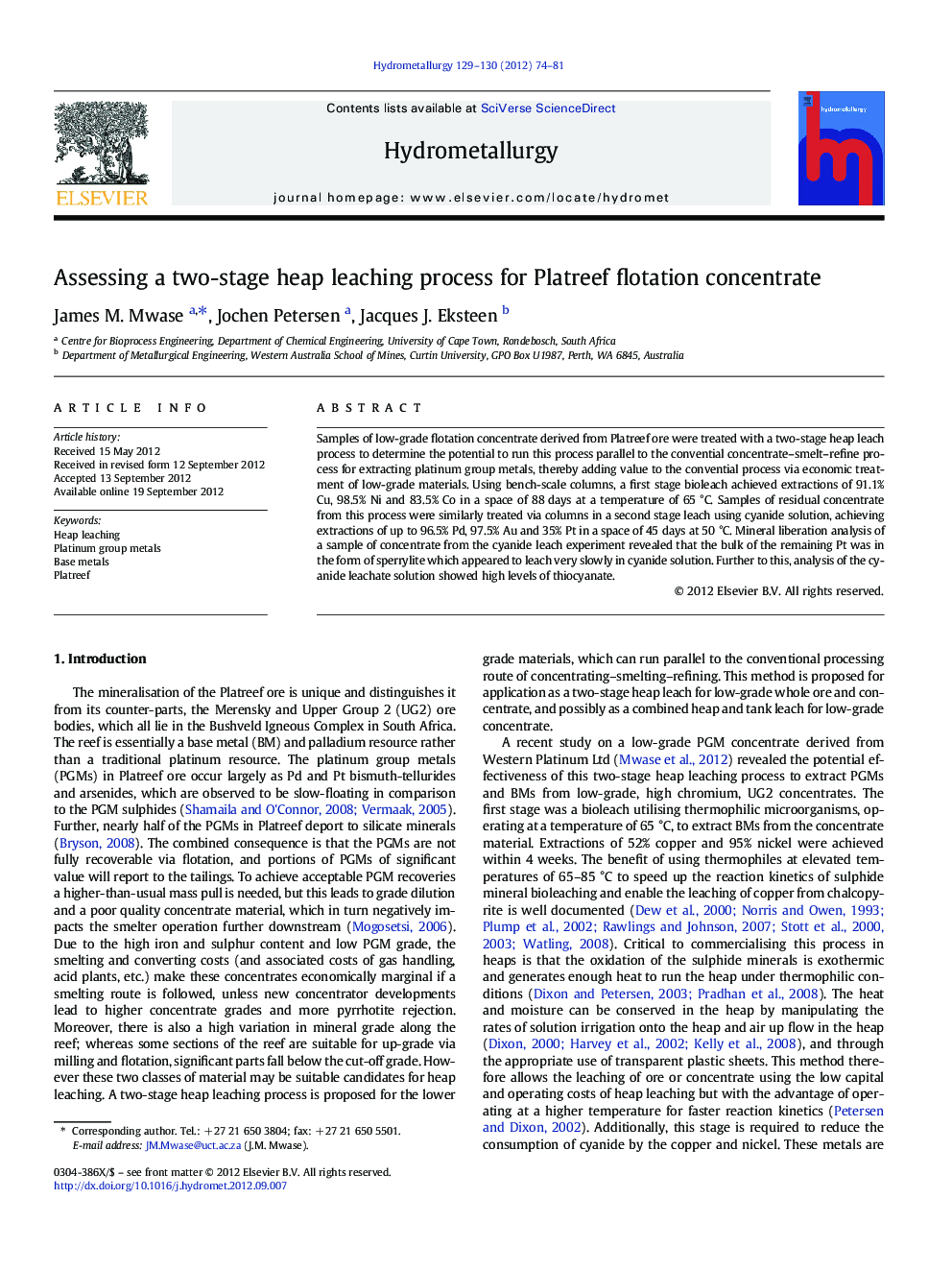| کد مقاله | کد نشریه | سال انتشار | مقاله انگلیسی | نسخه تمام متن |
|---|---|---|---|---|
| 212391 | 462047 | 2012 | 8 صفحه PDF | دانلود رایگان |

Samples of low-grade flotation concentrate derived from Platreef ore were treated with a two-stage heap leach process to determine the potential to run this process parallel to the convential concentrate–smelt–refine process for extracting platinum group metals, thereby adding value to the convential process via economic treatment of low-grade materials. Using bench-scale columns, a first stage bioleach achieved extractions of 91.1% Cu, 98.5% Ni and 83.5% Co in a space of 88 days at a temperature of 65 °C. Samples of residual concentrate from this process were similarly treated via columns in a second stage leach using cyanide solution, achieving extractions of up to 96.5% Pd, 97.5% Au and 35% Pt in a space of 45 days at 50 °C. Mineral liberation analysis of a sample of concentrate from the cyanide leach experiment revealed that the bulk of the remaining Pt was in the form of sperrylite which appeared to leach very slowly in cyanide solution. Further to this, analysis of the cyanide leachate solution showed high levels of thiocyanate.
► The study assesses a sequential heap leach process for leaching Platreef concentrate.
► Cu and Ni were effectively extracted use a thermophile bioleach.
► A subsequent cyanide leach effectively extracted Pd and Au.
► The occurrence of Pt as sperrylite limited the rate of extraction using cyanide.
Journal: Hydrometallurgy - Volumes 129–130, November 2012, Pages 74–81